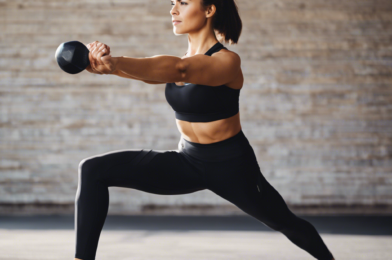**Injury Prevention: Strengthening Your Body and Improving Flexibility**
Injury prevention is a critical aspect of maintaining a healthy, active lifestyle. Whether you’re an athlete, a weekend warrior, or simply someone who wants to stay fit and mobile, incorporating strengthening and stretching routines into your regimen is essential. These practices not only enhance performance but also play a pivotal role in reducing the risk of injuries.
Strength training builds strong muscles, tendons, and ligaments, which in turn support and protect your joints. By increasing strength in the muscles surrounding joints, you create a robust framework that can withstand higher impacts and forces. This is particularly beneficial for high-intensity sports and activities that involve abrupt movements, such as twisting, jumping, or rapid direction changes. Stronger muscles also mean better balance and coordination, further reducing the likelihood of falls or accidents.
A well-rounded strengthening routine should target all the major muscle groups, including the core, which is often overlooked yet vital for stability. Incorporate exercises such as squats, lunges, push-ups, and plank variations into your regimen. Use resistance bands or light weights to add intensity and promote progressive strengthening.
In addition to strengthening, flexibility is a key component of injury prevention. Stretching is essential for maintaining mobility, and it helps lengthen tight muscles, increasing range of motion around joints. This practice not only enhances performance but also alleviates muscle tension, reducing the risk of pulls and tears. Improved flexibility contributes to better posture, balance, and overall body awareness, all of which are essential for injury prevention.
Consistency is key when it comes to stretching. Aim to stretch all the major muscle groups, focusing on areas that are commonly tight, such as the hips, chest, and hamstrings. Dynamic stretching before a workout helps prepare the body for activity, while static stretching post-workout aids in muscle recovery.
For injury prevention and management, it’s also important to listen to your body. Understand the difference between muscle soreness and pain. Soreness is often a sign of muscle repair and growth, whereas pain may indicate an injury or strain. If you experience persistent pain, modify your routine or seek guidance from a healthcare professional.
Preventing injuries doesn’t just happen in the gym or on the field; it’s also about recovery. Allow adequate rest and recovery time between workouts to give your body a chance to repair and rejuvenate. Proper nutrition and hydration also play a significant role in injury prevention, supporting muscle repair and optimal body function.
Incorporating strengthening and stretching routines into your regimen is a proactive approach to injury prevention. By taking the time to strengthen your body and improve flexibility, you’re not only enhancing your physical performance but also reducing the risk of setbacks and injuries that can derail your progress. Whether you’re an elite athlete or a recreational enthusiast, investing in injury prevention through strengthening and stretching is one of the smartest decisions you can make for your long-term health and fitness journey.
Proper warm-up routines are also pivotal in preventing injuries. A warm-up increases blood flow to muscles, enhancing flexibility and preparing them for the demands of the upcoming activity. It improves balance and coordination, reducing the risk of falls or mishaps. Additionally, warming up helps mentally prepare individuals for the task at hand, improving focus and reducing the chances of errors that could lead to injury.
A comprehensive warm-up should include light cardio to elevate the heart rate, followed by dynamic stretching and mobility exercises. This routine helps increase blood flow to the muscles, improving flexibility and reducing the risk of pulls or strains. Examples of dynamic stretches include leg swings, arm circles, and lunges with a twist. These moves mimic the movements your body will undergo during exercise, preparing the muscles, tendons, and ligaments for the upcoming activity.
The importance of a proper cool-down routine cannot be overstated. After an intense workout or activity, your body needs time to transition to a resting state. Cooling down helps lower your heart rate and blood pressure gradually, promoting healthy blood flow and aiding in the removal of lactic acid from the muscles, thus reducing post-workout muscle soreness.
An effective cool-down routine includes light cardio, such as a slow jog or brisk walking, followed by static stretches. Static stretches are held in a fixed position for a set period, typically 15-30 seconds per muscle group. This type of stretching helps lengthen the muscles, improving flexibility and reducing muscle tension built up during exercise. Examples include chest stretches, hamstring stretches, and calf stretches.
By incorporating effective warm-up and cool-down routines, you’re not only enhancing your physical performance but also actively preventing injuries. These routines prepare your body for the demands of exercise and help facilitate recovery, ensuring you can stay on track with your fitness goals and maintain a healthy, active lifestyle.









